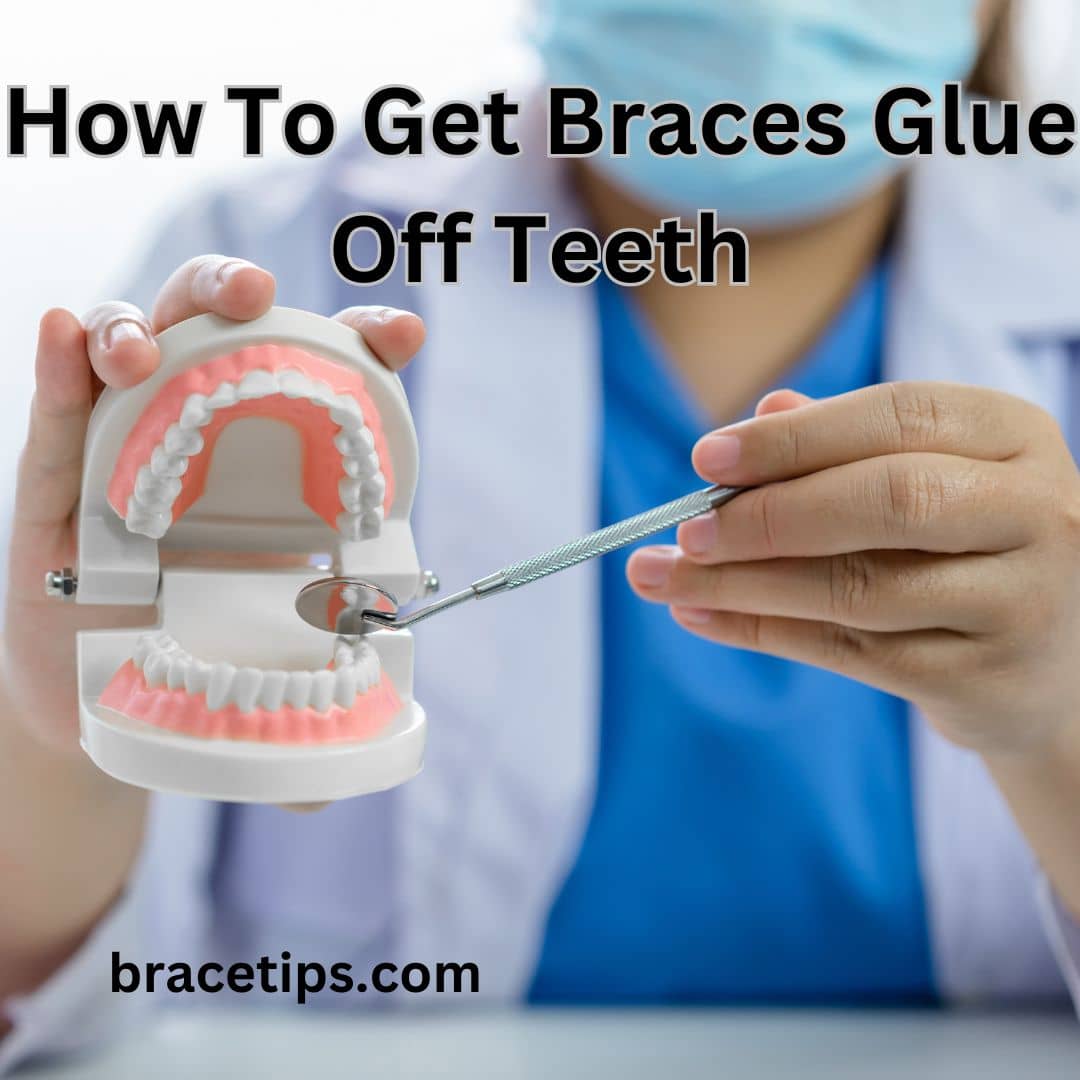How To Get Braces Glue Off Teeth
Braces are an effective solution for correcting dental misalignments, but once they come off, dealing with the leftover adhesive (brace glue) on your teeth can be a hassle. Safely and effectively removing brace glue requires a careful process to prevent damage to your teeth. In this guide, we’ll delve into the steps and considerations to safely eliminate brace glue and maintain dental health post-braces removal. Getting braces off is an exciting milestone, but the challenge of removing the residual glue left behind on your teeth can be daunting. However, with proper care and the right approach, you can safely and effectively remove brace glue without causing damage to your teeth. This comprehensive guide will walk you through the process step-by-step, addressing the risks involved and providing essential tips for post-braces care.
Braces can work wonders in aligning teeth, but the adhesive used to attach them often leaves behind residue once the braces are removed. This residual glue can be bothersome and challenging to remove without proper guidance. In this detailed guide, we’ll explore effective methods on how to safely and efficiently remove braces glue from teeth without causing damage or discomfort.
Overview of Getting Braces Glue Off Teeth
Understanding Braces Glue
Braces are affixed to teeth using a dental adhesive to hold them in place during the treatment period. The glue used is sturdy and resilient, designed to endure various conditions within the mouth. However, upon brace removal, this adhesive often leaves residue on the tooth surface, requiring thorough removal. The adhesive used in braces, typically a dental cement, forms a strong bond with the teeth to keep the brackets in place throughout the treatment. Upon removal, this adhesive can leave a sticky residue on the enamel surface, making it essential to address for the sake of oral hygiene and aesthetics.
What is Braces Glue?
Braces glue, also known as orthodontic adhesive, is a dental bonding material used to attach brackets to your teeth during orthodontic treatment. When the braces are removed, a residue of this adhesive often remains on the teeth, requiring proper techniques for removal.
Risks Associated with Removing Braces from Teeth
Attempting to remove braces or their adhesive without proper guidance or tools can pose risks to dental health. Improper techniques might damage the tooth enamel, leading to sensitivity, discoloration, or even potential structural damage. Before embarking on the removal process, it’s crucial to understand the potential risks. These include damaging tooth enamel, causing sensitivity, or leaving adhesive residue behind, leading to discoloration or decay if not addressed properly.
Can You Safely Remove Braces from Teeth?
It’s crucial to emphasize the significance of seeking professional assistance when removing braces. Dentists or orthodontists have the expertise and tools necessary to safely and effectively remove braces and residual adhesive without harming your teeth. Yes, it is possible to safely remove braces glue from teeth, but it requires patience and careful execution. Attempting to remove it hastily or aggressively can harm the enamel or cause discomfort.
Step-by-Step Guide to Remove Brace Glue from Teeth
1: Consultation with a Professional
Before attempting any removal at home, schedule an appointment with your orthodontist or dentist for a post-braces check-up. They’ll assess the condition of your teeth and recommend the best approach for removing the adhesive.
2: Professional Removal Process
Your dentist or orthodontist will use specialized tools to scrape off the majority of the adhesive. This process requires precision to ensure the glue is removed without damaging the enamel.
3: Polishing
Following the adhesive removal, a dental professional will polish the tooth surface to eliminate any remaining residue and restore the natural shine of your teeth.
4: At-Home Care
Post-removal care is crucial. Your dentist will provide guidance on proper oral hygiene practices, including brushing, flossing, and using mouthwash to maintain dental health.
5: Gather Necessary Supplies
You’ll need orthodontic wax, dental floss, a soft-bristled toothbrush, fluoride toothpaste, a dental pick, and potentially an adhesive remover recommended by your orthodontist.
6: Softening the Glue
Begin by brushing your teeth with fluoride toothpaste to soften the adhesive. Use a circular motion and pay particular attention to the areas with glue residue.
7: Use Dental Floss
Gently slide dental floss between your teeth where the glue is present, moving it back and forth to loosen the adhesive. Be cautious not to force the floss or cause discomfort.
8: Utilize Orthodontic Wax
Applying orthodontic wax to the remaining glue can help lift it off the teeth. Mold the wax over the adhesive and let it sit for a few hours or overnight to facilitate the loosening process.
9: Brush and Rinse
After allowing time for the wax to work its magic, brush your teeth again with a soft-bristled toothbrush, paying extra attention to the areas previously covered in wax. Rinse your mouth thoroughly to remove any remaining debris.
Caring for Your Teeth After Removing Braces
Once the glue is successfully removed, it’s vital to adopt a diligent oral care routine. This includes regular brushing, flossing, and possibly using a fluoride mouthwash to maintain oral hygiene and prevent any further issues.
Maintain a Routine
Consistency is key. Continue following your dentist’s recommendations for oral hygiene to prevent any issues related to the adhesive residue and ensure long-term dental health.
Regular Dental Check-ups
Schedule routine dental visits to monitor the health of your teeth and address any concerns that may arise after brace removal.
Remove Retainer Glue from Teeth
Similar to the process of removing brace glue, if you use a retainer and notice any residual adhesive, seek professional assistance for safe removal.
Risks and Challenges
- Discuss the potential risks associated with leaving braces glue on teeth.
- Highlight challenges in removing stubborn adhesive and the consequences of improper removal techniques.
FAQ Section
Q: Can you remove brace glue at home without professional assistance?
A: It’s highly recommended to consult a dental professional for safe and effective removal to prevent damage to your teeth.
Q: Are there any risks associated with removing brace glue without professional help?
A: Yes, attempting to remove adhesive without proper tools or expertise can damage tooth enamel and lead to various dental issues.
Q: How can you ensure my teeth remain healthy after removing braces and their adhesive?
A: Follow your dentist’s advice for oral hygiene, attend regular dental check-ups, and seek professional help if you notice any issues.
Q: What if the braces glue residue persists despite trying removal techniques?
A: If the glue residue persists or if removal attempts cause discomfort, it’s advisable to consult a dentist for professional guidance and assistance.
Q: Can oil pulling help in removing braces glue?
A: Yes, oil pulling with coconut, olive, or sesame oil can help soften the adhesive, making it easier to remove. However, it may not completely eliminate the glue and might require additional methods.
Q: How long does it take to remove braces glue?
A: The removal process can vary depending on the amount of adhesive and its adherence to the teeth. It may take several attempts and a few days to completely remove the glue.
Q: Will removing the glue damage my teeth?
A: When done carefully and following proper techniques, the risk of damage is minimal. However, aggressive removal methods or inadequate care could potentially harm the enamel.
Conclusion
Removing brace glue from teeth requires a careful, step-by-step approach to preserve dental health. While it might be tempting to attempt removal at home. Seeking professional assistance is strongly advised to prevent any potential damage to your teeth. By following the guidance of dental experts and maintaining proper oral hygiene, you can effectively remove brace glue and keep your teeth healthy and radiant post-braces. Removing brace glue from teeth requires patience, gentle techniques, and, at times, professional assistance. Following this comprehensive guide and being mindful of the risks involved will help ensure a successful and safe removal process. Remember, prioritizing oral hygiene post-braces removal is crucial for maintaining a healthy and beautiful smile. By diligently following these steps and seeking professional guidance when needed. You can effectively bid farewell to brace glue, welcoming a confident and radiant smile.
Removing braces glue from teeth demands patience and gentle care. By following these recommended steps and consulting your orthodontist when needed. You can safely eliminate the residual adhesive without causing harm to your teeth or gums. Remember, maintaining good oral hygiene throughout this process is crucial for overall dental health.

